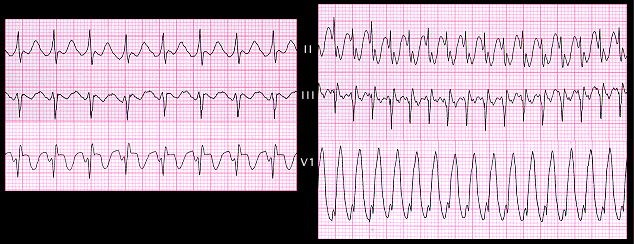
Atrial flutter with rates in excess of 250 occurring in the absence of WPW is occasionally seen in children, but, as mentioned, is exceedingly rare in adults. The tracing on the left shown here is from a 45 year old male with atrial flutter with 2:1 AV block and a ventricular rate of 140. The negative flutter waves in leads II, and III indicate that this is type I flutter with counterclockwise rotation. The tracing on the right was recorded several months later and now the ventricular rate is 280. The QRS appears wider but it is difficult to identify the end of the QRS complex with certainty. By itself, this tracing could be interpreted as an AV reentrant tachycardia. However, the presence of atrial flutter having a flutter rate of 280 and 2:1 AV block on the earlier tracing suggests that the correct diagnosis is more likely atrial flutter with 1:1 AV conduction. Confirmation of this diagnosis is shown on the next page.
